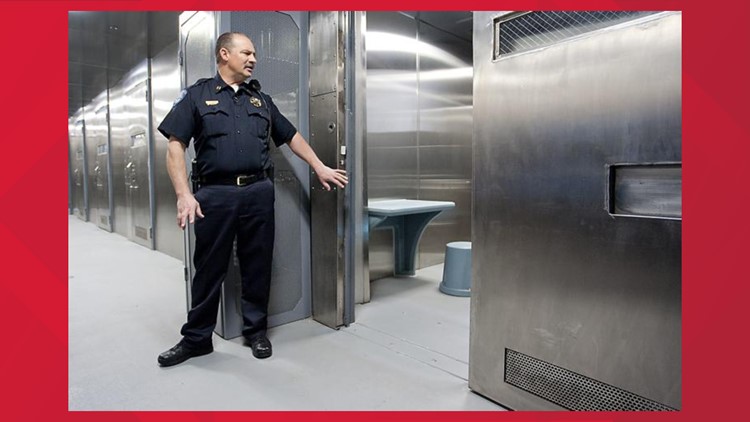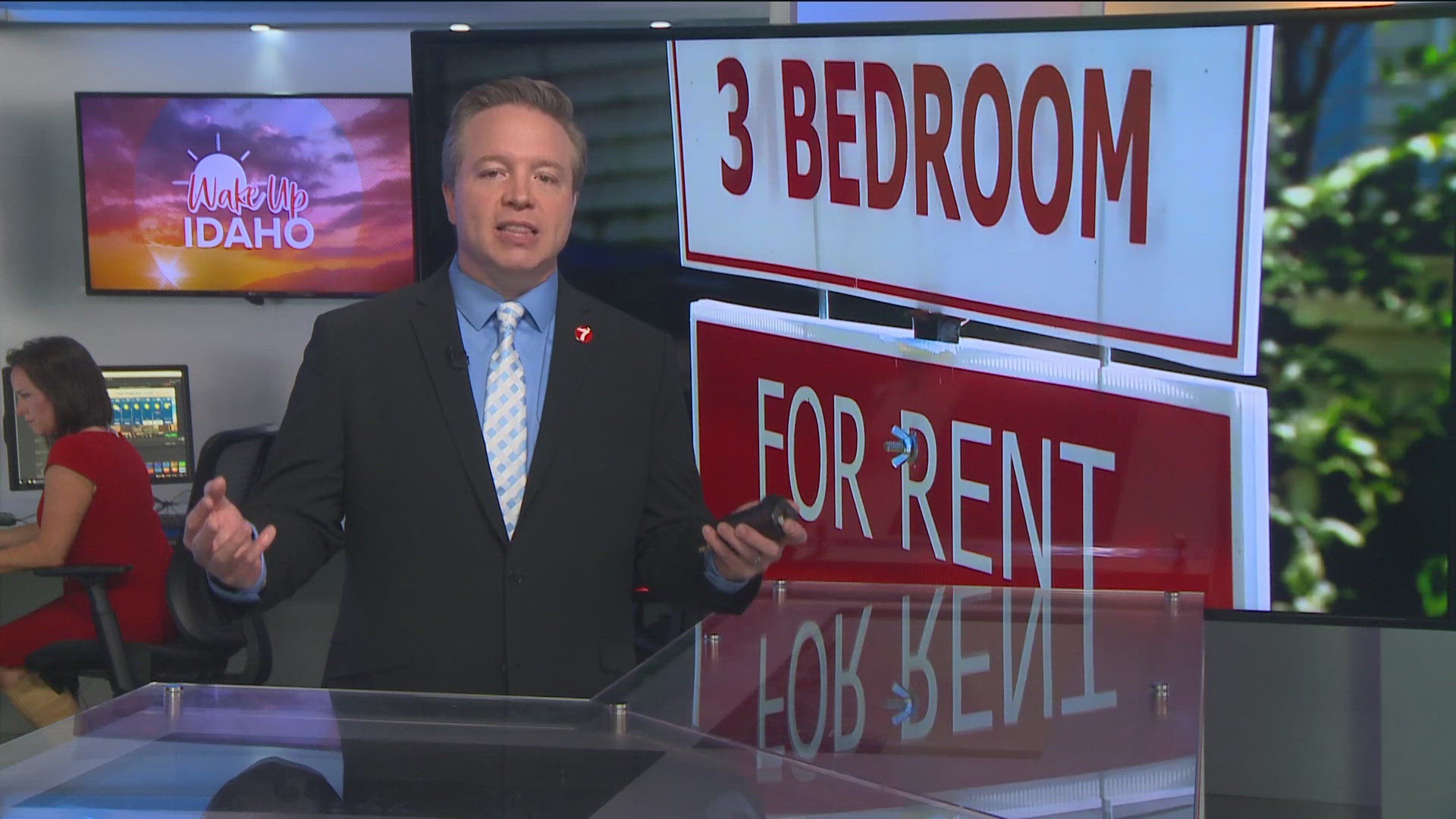CALDWELL, Idaho — In a few weeks, women incarcerated in Canyon County will move from “dilapidated” and dimly lit cells to a brand-new, stainless steel structure in the existing jail’s parking lot.
The 122-bed facility, made out 28 steel truck trailers that are welded together, is meant to be a temporary fix to the county’s overcrowding woes.
“To me, it’s actually astounding to see what they’ve done,” Sheriff Kieran Donahue said. “It’s just a building — that’s what it looks like. … Just seeing how it came together and just how beautiful the building is itself and the functionality — I, personally, couldn’t be happier; I really couldn’t. And I think the taxpayers will be, too.”
He doesn’t want the public to misunderstand, though — the unit, albeit new and a major upgrade to the old facilities for female inmates, is not a permanent solution, and the county will still need to work toward funding a larger jail to meet its needs over the next 20 to 30 years.
“It’s not a fix-all; it’s one small brick in this huge plan,” Donahue said. “This is a good intermediate step, but it’s temporary. … Canyon County’s jail problems are not over.”
Canyon County is among the first to have such a jail facility from the Missouri-based All Detainment Solutions. The installation and first year of the lease will cost $4.5 million. The county will pay almost $1.5 million a year after that, for up to four more years, at which point it will have the option to purchase the facility for a final payment of $1.9 million, for a potential total cost of $12.4 million.
Donahue expects the county to use the nearly 13,000-square-foot facility for five to seven years. In the next four to five years, the county also hopes to phase out the use of a temporary jail tent facility, he added, which can hold up to 122 inmates. The tent structure was built in 2006 for inmates on work release, but the county, desperate for more jail beds, converted it in 2010 into housing for minimum- to medium-security male inmates.
“The tent was supposed to be a temporary facility,” Donahue said. “It does have a … shelf life, and that’s coming toward an end in the next four to five years.”
NEW FACILITY
The new stainless steel jail unit will allow all female inmates to reside in a single building, Donahue said. Male inmates then will be transferred to some of the jail areas previously used to house women, though other sections in worse shape will be closed.
Capt. Daren Ward, who oversees jail operations and led a media tour of the new facility Friday, said the new unit has 12 maximum-security beds and two dormitory-style areas with 18 beds each. The rest of the 74 beds are broken into 18 four-person cells and one two-person cell. Telephones, TVs and tablets are available in the minimum- to medium-security housing units.
Inside the facility — which will be manned by three deputies at a time — there also is a satellite medical unit, an attorney visitation room and a multipurpose space, which could be used as a classroom for educational programs.
Outside the stainless-steel walls, there are two mesh-covered recreation areas. Women in maximum security will spend their time outdoors in confined, individual fenced-in spaces.
Inmates are required to have at least five hours of recreation a week under Idaho’s jail code, Ward said. To meet that standard, they generally get one hour a day for five days a week.
Ward said 43 cameras placed in and outside of the facility monitor daily happenings.
However, the new facility was designed not just with inmates in mind, but with deputies as well.
“A deputy working 20 years in a facility, he or she spends six years of their life behind bars, so to speak,” Donahue said.
Ward said more natural or ambient light is able to filter into various areas of the facility — such as the cells, dormitories and command center — to help the psyche of both the inmates and deputies who work there. The LED lighting also mimics daylight.
Ward traveled to Missouri six times to meet with All Detainment Solutions and craft a design specific to Canyon County’s needs.
“When a county comes to us, we try to listen to their needs, what they’re wanting and what their goals are. Then, we try to customize our design to that particular county,” said Anthony Kelly, president of All Detainment Solutions, during the tour. “And I believe that’s what we’ve done here with Canyon County’s facility. We’re really proud of this. … We’ve been out here so long now, Idaho is our second home.”
Kelly said as long as the facility is in Canyon County, it is warrantied by All Detainment Solutions. The company will contract with local vendors for upkeep.
“We want to take care of this facility while it’s here through the end,” Kelly said.
Eventually, Donahue said, the agency hopes the added space will allow the county to close older parts of the jail, such as the 1948 annex. He added the sheriff’s office plans to send a resolution to the Board of Canyon County Commissioners, so “that it’s never an option for housing inmates again.”
“It’s very dilapidated,” Donahue said. “It just is not adequate; it’s not appropriate.”
The jail trailers were set to be fully operational by summer of 2019, but the opening was delayed, mostly due to the approval and inspection process. The trailers were trucked from Missouri to Canyon County last fall.
RELATED: 'It's a Band-Aid on a bleeding artery': Canyon County Jail begins to house inmates in trailers
OUT-OF-COUNTY COSTS
The shuffling of inmates will allow the county to renovate parts of the Dale G. Haile Detention Center, such as adding new paint and other upgrades, which weren’t able to be done with the jail over the 80% recommended capacity.
Ward said the jail consistently is over that ideal capacity. On Friday, it was at almost 94% capacity with 448 inmates, according to the county’s jail statistics website. Of that total number, 74 were women.
Ward said when the new unit opens, it will already be at or near 80% capacity, with about 98 inmates. Once inmates who have been sent to facilities outside Canyon County are brought back to Caldwell, the number will be closer to reaching capacity. He added it costs $75 a day to house an inmate in a different county, plus the transport and other costs.
In the first four months of fiscal year 2020, the county has paid $131,775 to other county jails, the website shows.
If the new unit’s capacity is met, the sheriff’s office will be “back in the same boat,” Donahue said, and have to send inmates to other counties, which already has been a challenge for the agency since other Idaho counties are dealing with overcrowding issues as well.
“That’s a lot of taxpayer money,” Donahue added. “We’re hoping to not have to do that, because those bed spaces are a premium to try to get.”
Donahue said the building has provided the county with some “breathing room” while officials devise a more permanent solution and secure funding. Last May, more than 9,000 people voted down Canyon County’s $187 million bond request for a new jail, with about 66% voting against it. It was the fourth failed attempt since 2006.
After May’s failed measure, the board of commissioners has been meeting with various banks and local officials to try to come up with a permanent solution to the county’s jail overcrowding.
The commissioners have considered using sunsetting urban renewal money, a local option sales tax (if approved by the Legislature), a lease structure and impact fees, though they are unsure if impact fees are eligible for jail construction.
“We collectively have to come up with avenues moving forward to solve jail problems,” Donahue said. “This is not going away. It’s not going to go in reverse. It’s only going to go forward.”
Olivia Heersink is the Canyon County public safety reporter. You can reach her at oheersink@idahopress.com. Follow her on Twitter @heersinkolivia.
More from our partner Idaho Press: A look at Risch, Crapo's questions in President Trump's impeachment trial
Watch more 'Growing Idaho':
See the latest growth and development news in our YouTube playlist:



